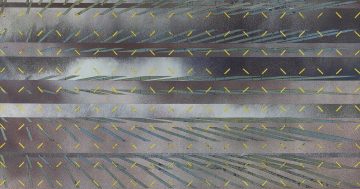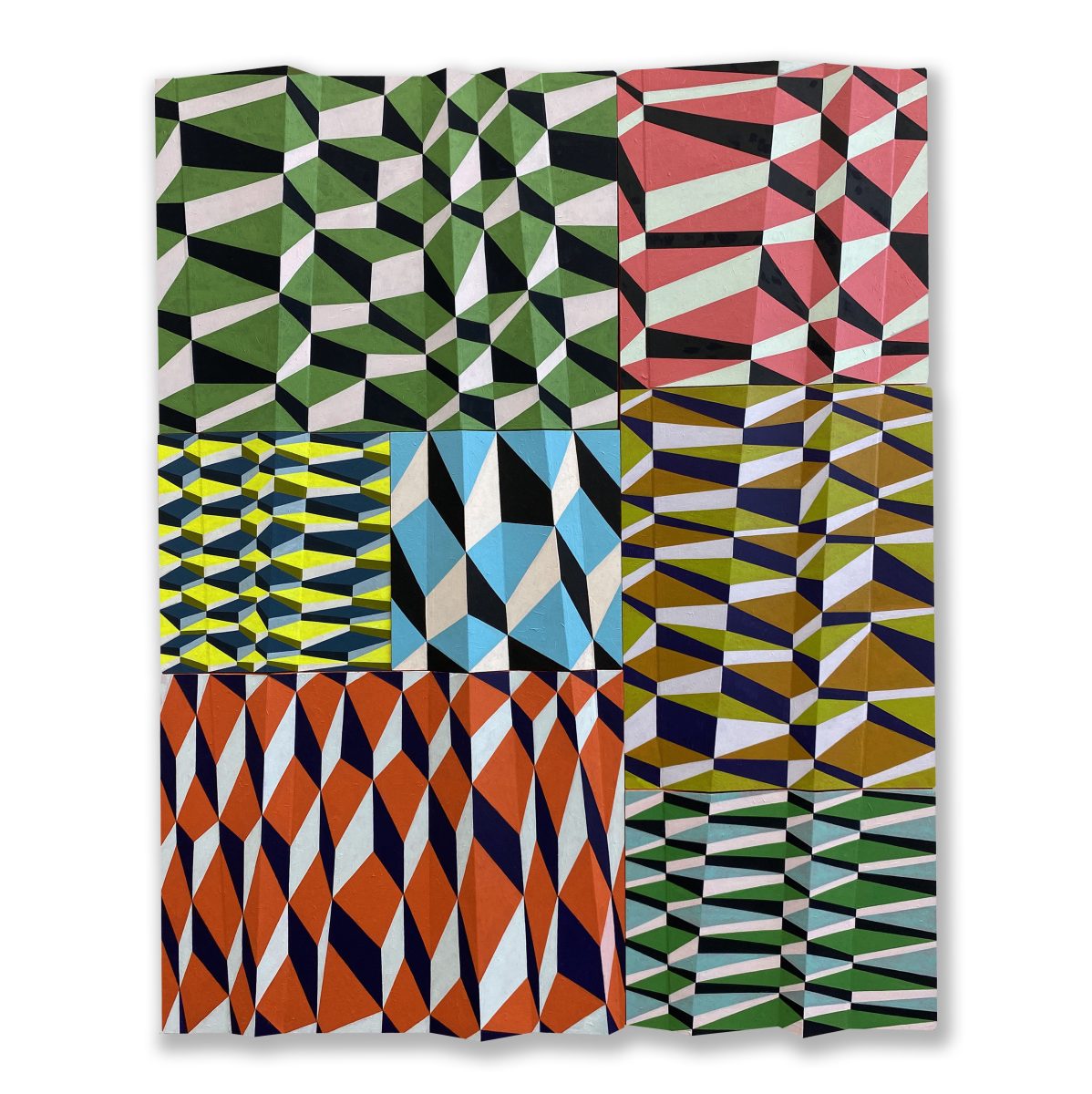
Al Munro, Quilt 1, 2024, acrylic on constructed boxwood and birch panel, 150 x 100 x 5cm. Photo: ANCA.
As an artist, Al Munro is a purely Canberra product. She received her education at the ANU School of Art and works from her studios in Canberra. Although she likes to travel and has had residencies internationally – in December 2024, for example, she was living and exhibiting in Bangkok – she always gravitates back to Canberra. It is a city with which she admits to having a love-hate relationship.
There is a frankness and basic honesty in Munro’s art as is exemplified in her new exhibition at ANCA with the descriptive title Pattern/colour/space/form. It is what the exhibition is about, but each of these elements is an area of separate exploration. Nothing is quite as simple as it seems.
While deceptively simple at first glance and quite pleasing to the eye, on further examination, this quickly melts like the illusion of visual candy, and you become absorbed into a world that increasingly appears as a little awkward and edgy. The beauty of geometric patterns is that they are perfectly resolved, but at the same time they can be opened up to infinite variations.
In a major piece such as Quilt, it is as the title suggests a patchwork of patterns, each with its own logic and operating under its own rules. What may not be immediately apparent from the photograph is that the surface is not flat, but physically ‘folded’ or corrugated to suggest textile pleats. This converts the piece into a kinetic surface so that as you visually explore the work, the patterns start to jump about, they invite optical distortions and invariably make you see the colours and the spaces differently.
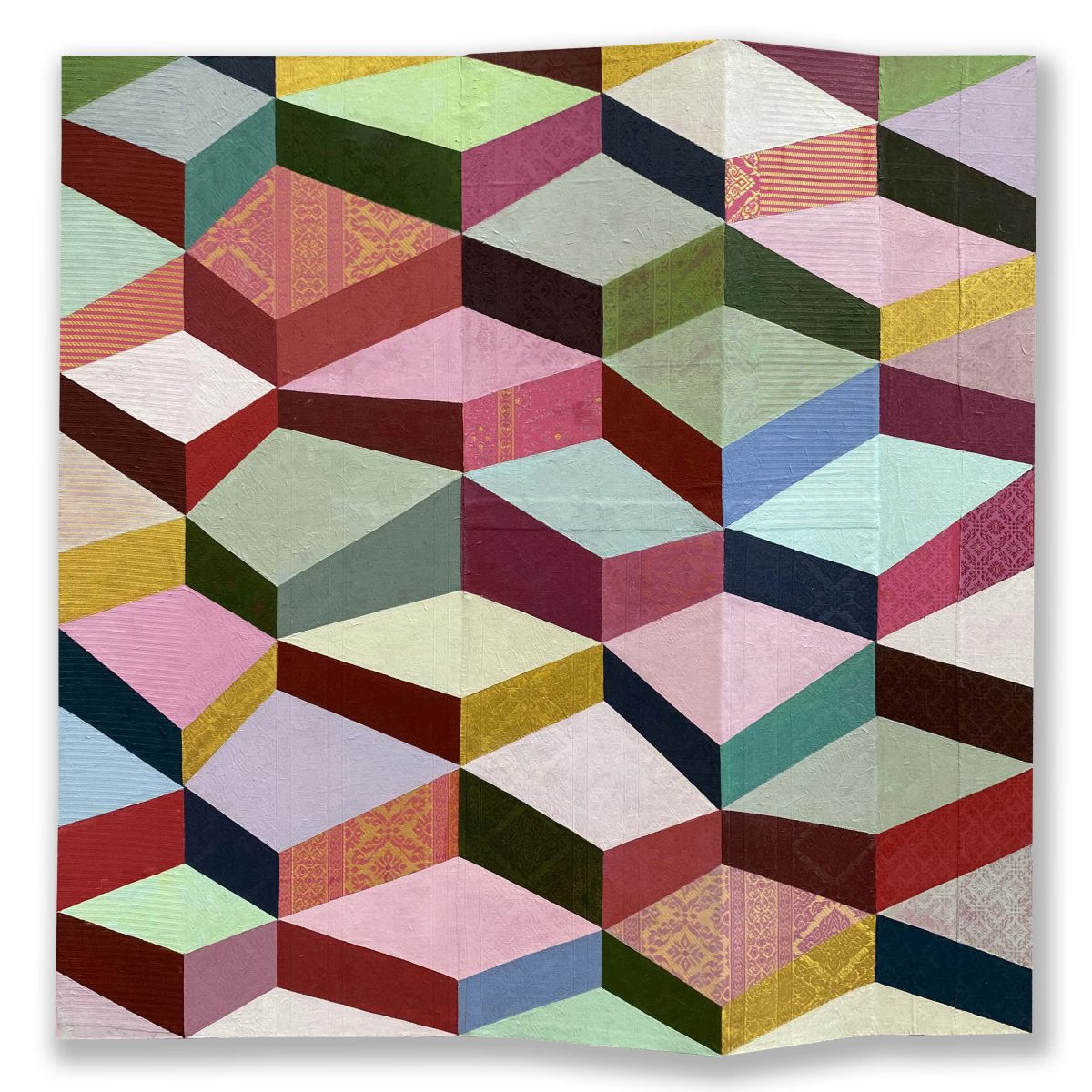
Al Munro, Colour and pattern 1, 2025, acrylic and fabric on constructed boxwood and birch panel, 60 x 60 x 5 cm. Photo: ANCA.
Munro is quite a deliberate and calculating artist. As I understand it, she starts with an idea or a concept that she tries out on pieces of folded paper that she paints in the required colours. These she improvises until she has attained the required complexity and then proceeds to her carpentry where she constructs the surface, sometimes adding strips of material, and finally colours her constructed paintings. The painting is done free hand, so that we are always aware of the human touch in contrast to a machine-like precision and photographic or digital finish.
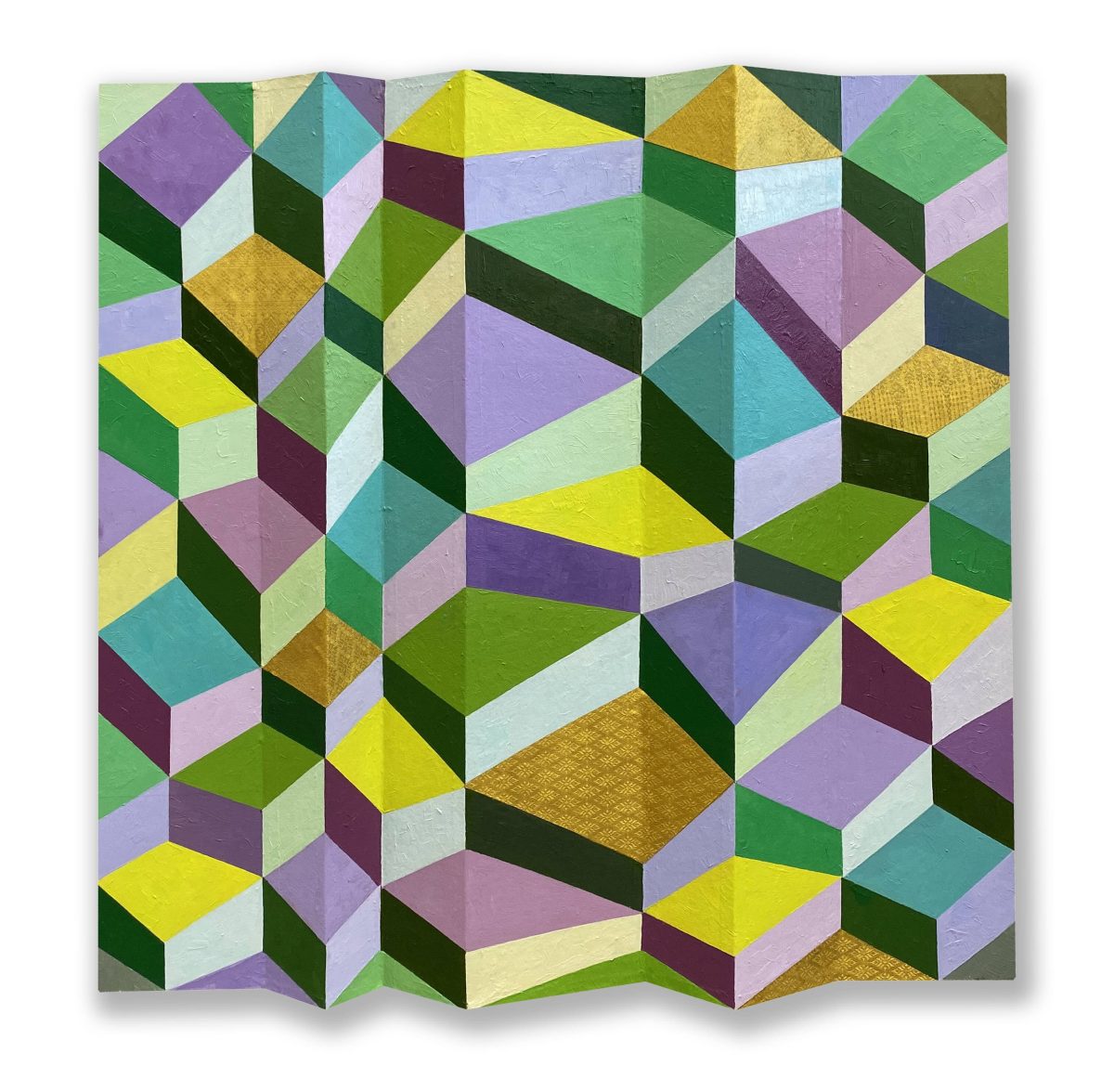
Al Munro, Colour and pattern 3, 2025, acrylic and fabric on constructed boxwood and birch panel, 60 x 60 x 5 cm. Photo: ANCA
When you get to know a series of her paintings, for example, Colour and pattern 1, Colour and pattern 3 and Colour and pattern 4, not only is their intricacy and complexity revealed, but also what I would refer to as a built-in sense of awkwardness and edginess. Rather than sticking with clear, simple and pleasing colours, Munro is happy to play with difficult-to-handle hues, shades and tones. All of these make their own demands on the viewer as we are challenged and seduced.
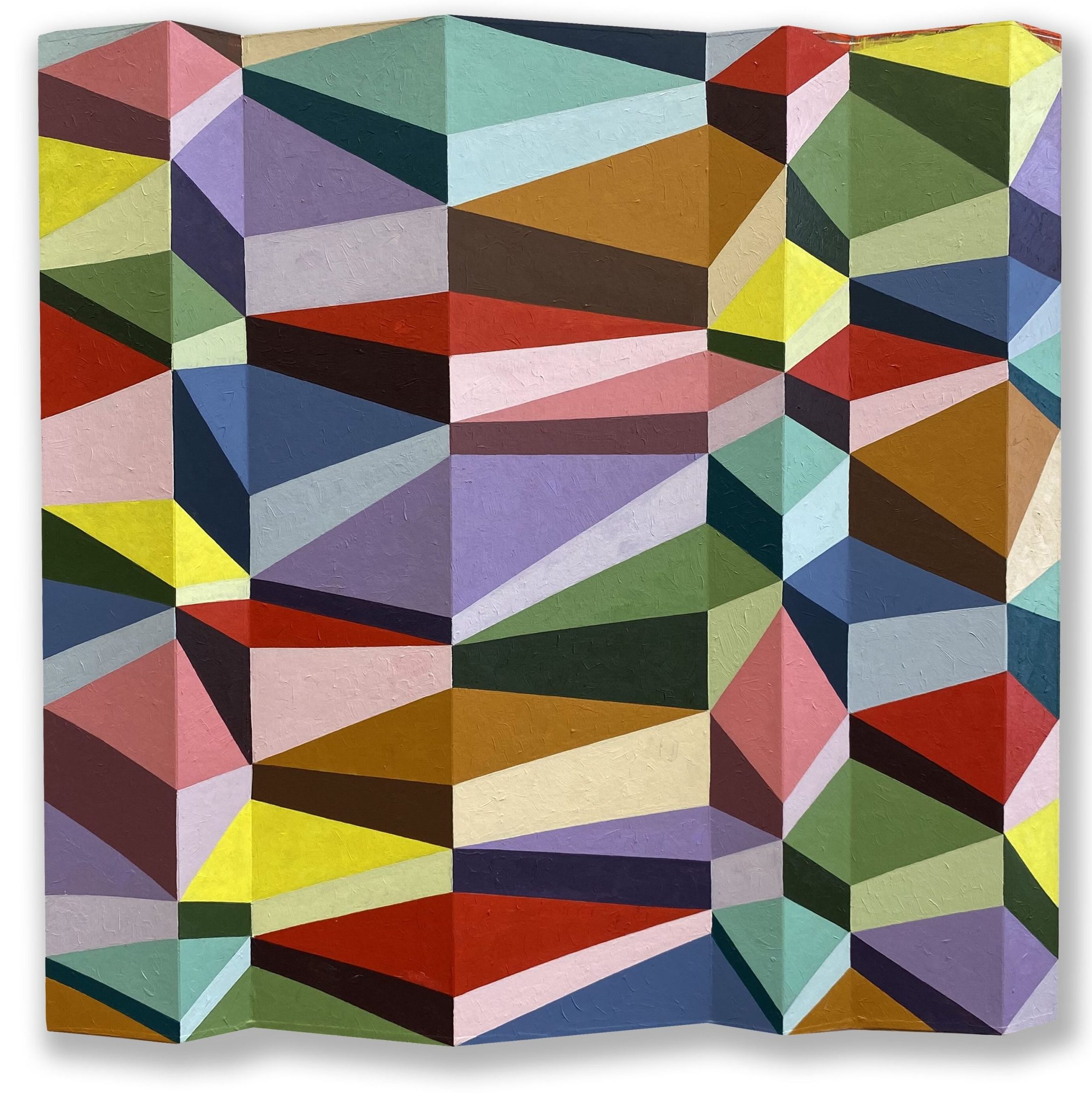
Al Munro, Colour and pattern 4, 2025, acrylic on constructed boxwood and birch panel, 70 x 70 x 5 cm. Photo: ANCA
Surfaces are also endlessly variable with different textures and underlying patterns and these challenge the viewer to find their own sense of equilibrium. Munro is also very susceptible to changing environments, so that after her Bangkok sojourn, there is a whole series of work in this exhibition that reflects her perception of colour in that city, as for example, in Bangkok street pattern 2.
In a recent interview, Munro hinted at her philosophy of art-making when she observed: “I think we’re hardwired to recognise patterns but not beauty. That’s very much dictated by social norms. What some people are attracted to is simply because they recognise a pattern that makes them feel safe. Most people don’t want to hang something challenging on their walls; people want to hang something safe, something that they know about and are already familiar with.”
Munro’s patterns take the viewer out of their comfort zone and force them to question the way in which they view their world.
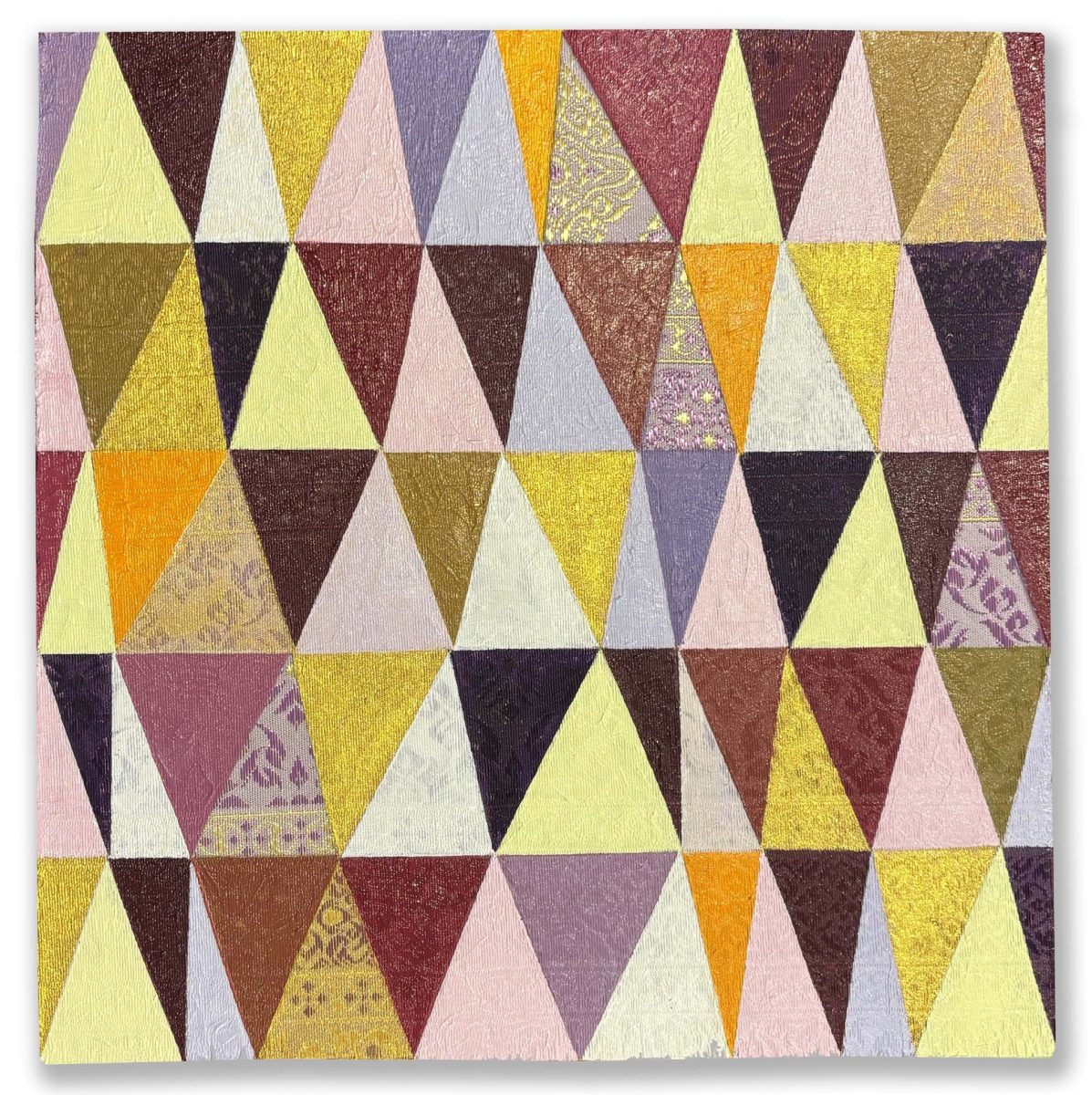
Al Munro, Bangkok street pattern, 2025, acrylic paint and fabric on canvas, 20 x 20 cm. Photo: ANCA
Al Munro, Pattern/colour/space/form, is on at ANCA, 1 Rosevear Pl, Dickson, Wednesday to Sudnay, 12 pm to 5 pm, until 9 March.












